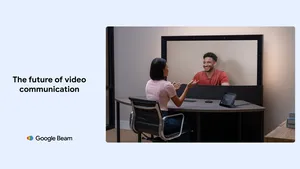Google and Gallup’s computer science education research: six things to know
Maru Ahues Bouza, an Engineering Manager at Google, wouldn’t be where she is today without her father’s encouragement to learn computer science (CS). Growing up in Venezuela, there were no CS classes for children, so when Maru was just 10 years old, her father enrolled her and her sister in an adult CS class. At first, the girls showed little interest, but with steady support from their father, Maru and her sister became the top performers in the class. Maru continued with CS, graduating from Universidad Simón Bolívar with a Computer Engineering degree. Maru says that she couldn’t have learned CS without her father’s confidence: “if you’re taught from a young age that you can definitely do it, you’re going to grow up knowing you can be successful.”

Our latest research confirms that this type of support and encouragement is indeed critical. In partnership with Gallup, today we are releasing a new research brief, Encouraging Students Toward Computer Science Learning, and a set of CS education reports for 43 U.S. states. Here are the top six things you should know about the research:
- Students who have been encouraged by a teacher or parent are three times more likely to be interested in learning CS.
- Boys are nearly two times as likely as girls to report that a parent has told them they would be good at CS.
- At age 12, there is no difference in interest in CS between boys and girls. However, the gap widens from age 12 to 14, when 47% of boys are very interested, but only 12% of girls express interest.
- Across Black, Hispanic, and White students, girls are less likely to be interested in learning CS compared to boys, with the biggest gap between Black girls (15% interested) and Black boys (44% interested).
- Students are more likely to learn CS in suburban areas (61%) than in rural areas (53%). Regionally, CS is most prevalent in the South or Northeast, where 57% of students are likely to learn CS.
- Principals perceive mixed parent and school board support for CS, and top barriers to offering CS include minimal budget for teachers and lack of trained teachers, as well as competing priorities for standardized testing and college requirements.


Simple words of support can help more kids like Maru learn CS, no matter who they are or where they live. It's not hard to encourage students, but we often don't do so unless a student shows explicit interest. So this winter break, read the research about CS education and take a few minutes to encourage a student to create something using computer science, like coding their own Google logo. This encouragement could spark a student’s lifelong interest in computer science, just like it did for Maru.






